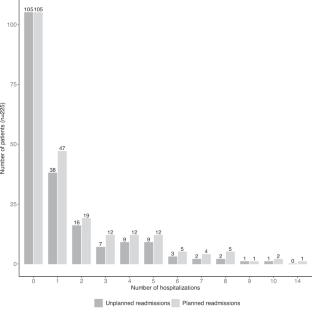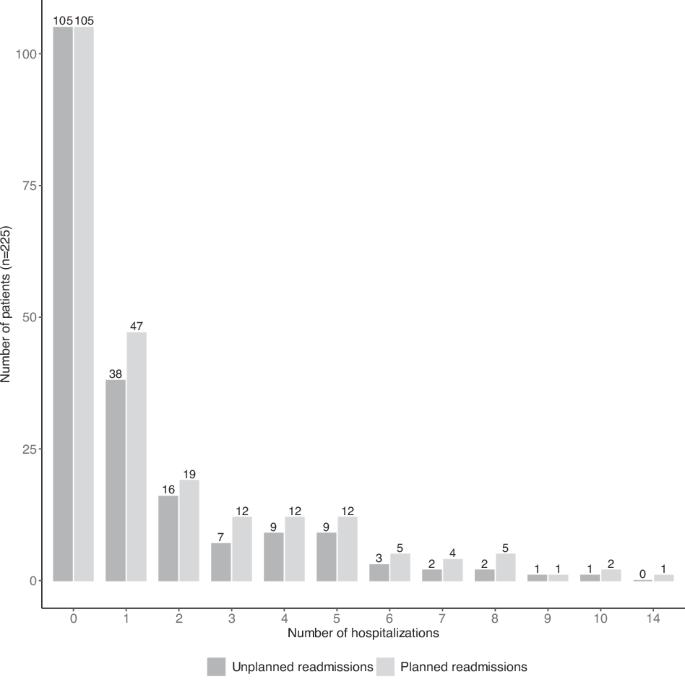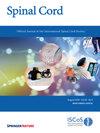脊髓损伤患者在初级康复后头 10 年内再次住院的发生率、原因和风险概况。
IF 2.1
4区 医学
Q3 CLINICAL NEUROLOGY
引用次数: 0
摘要
研究设计研究目的:回顾性队列研究:本研究旨在确定脊髓损伤(SCI)患者在初级康复后10年内再次住院的发生率、原因、时间模式和风险概况,并确定最常见的继发性健康状况(SHC)和导致再次住院的风险概况:背景:瑞士脊髓损伤专科医院和康复中心:对2010年1月1日至2012年12月31日期间首次康复出院的SCI患者的临床数据进行了回顾性分析,并对出院后的10年进行了随访。研究采用描述性统计方法计算再住院率,并找出主要原因。结果:共纳入 225 名参与者,其中 70% 为男性(n = 179),平均年龄为 50 岁(SD 19,范围 17-88)。54%被归类为截瘫(n = 122),77%为不完全损伤(n = 180)。在出院后的 10 年观察期内,120 人至少再次入院一次(发生率为 53%)。共有 66 人(29%)再次入院治疗一次或两次,54 人(24%)再次入院治疗三次或三次以上,最多的达 14 次。在这 10 年间,最常见的导致再次住院的严重急性呼吸系统疾病是感染(19%)、压伤(18%)和胃肠道疾病(16%)。在研究期间,有57人(25%)去世:结论:初级康复后再次入院的情况很常见,而且大多数情况下都是由于严重急性呼吸系统综合症造成的。研究结果对医疗资源规划很有价值,可指导实施预防措施,避免出现严重急性呼吸系统综合症。本文章由计算机程序翻译,如有差异,请以英文原文为准。


Prevalence, causes, and risk profile of rehospitalizations in persons with spinal cord injury within the first 10 years after primary rehabilitation
Retrospective cohort study. This study aims to identify the prevalence, causes, time pattern and risk profile of rehospitalizations in persons with spinal cord injury (SCI) within a 10-year period following primary rehabilitation and identify most common secondary health conditions (SHCs) and risk profile leading to rehospitalizations. Specialized hospital and rehabilitation center for SCI in Switzerland. A retrospective analysis was conducted on clinical data from persons with SCI, discharged from initial rehabilitation between January 1, 2010, and December 31, 2012, and followed up over a period of ten years post-discharge. Descriptive statistical methods were utilized to compute the rehospitalization prevalence and to identify the primary reasons. 225 participants were included, 70% were male (n = 179), and the mean age was 50 years (SD 19, Range 17–88). 54% were classified as having paraplegia (n = 122), and 77% incomplete injuries (n = 180). Over the 10-year observation period post-discharge, 120 were readmitted at least once, (prevalence 53%). In total, 66 persons (29%) were rehospitalized once or twice, while 54 persons (24%) were rehospitalized three or more times, with a maximum of 14 times. In the 10-year period, the most common SHCs leading to rehospitalization were infections (19%), pressure injuries (18%), and gastrointestinal problems (16%). During the study period, 57 persons (25%) passed away. Rehospitalization after primary rehabilitation is frequent and in the majority of the cases due to SHCs. The study findings are valuable for resource planning in healthcare and can guide the implementation of preventive measures to avoid SHCs.
求助全文
通过发布文献求助,成功后即可免费获取论文全文。
去求助
来源期刊

Spinal cord
医学-临床神经学
CiteScore
4.50
自引率
9.10%
发文量
142
审稿时长
2 months
期刊介绍:
Spinal Cord is a specialised, international journal that has been publishing spinal cord related manuscripts since 1963. It appears monthly, online and in print, and accepts contributions on spinal cord anatomy, physiology, management of injury and disease, and the quality of life and life circumstances of people with a spinal cord injury. Spinal Cord is multi-disciplinary and publishes contributions across the entire spectrum of research ranging from basic science to applied clinical research. It focuses on high quality original research, systematic reviews and narrative reviews.
Spinal Cord''s sister journal Spinal Cord Series and Cases: Clinical Management in Spinal Cord Disorders publishes high quality case reports, small case series, pilot and retrospective studies perspectives, Pulse survey articles, Point-couterpoint articles, correspondences and book reviews. It specialises in material that addresses all aspects of life for persons with spinal cord injuries or disorders. For more information, please see the aims and scope of Spinal Cord Series and Cases.
 求助内容:
求助内容: 应助结果提醒方式:
应助结果提醒方式:


